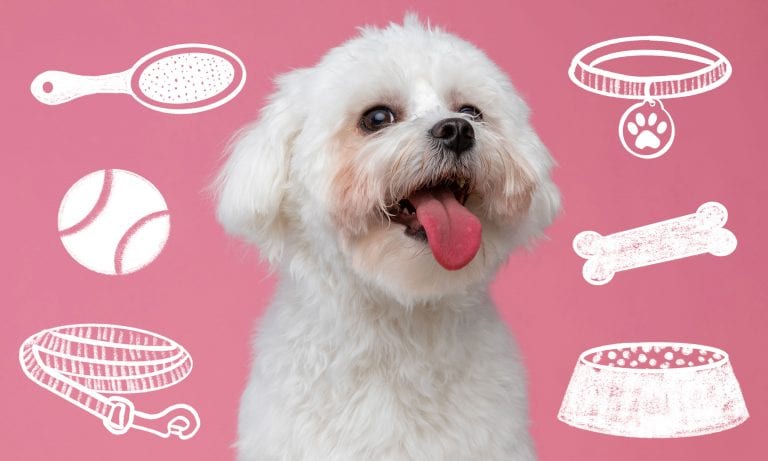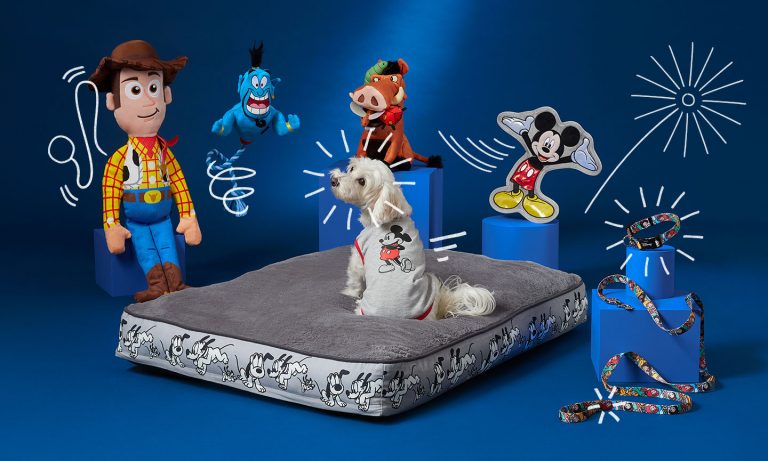Going on a vacation can be an exciting time! That is, until your excitement is met with frustration as you try to coax your pet into her dog carrier. No matter how hard you try, your dog might bolt at the sight of her carrier. Or maybe she hesitantly makes her way in, but spends the whole trip crying. Sound familiar? The good news is that traveling with your dog does not have to be a stressful experience—for you or her! The key is to teach your dog to love her carrier, no matter the circumstances.
Waiting until your bags are packed and you’re ready to walk out the door would be a bad time to introduce your pup to her carrier, especially if in the past, it was only used for negative experiences. Joan Hunter Mayer, Certified Personal Dog Trainer, encourages dog parents to create positive associations between dogs and their crates. “The crate needs to represent a fun, enjoyable and safe space—a place she can call home.” A couple of great options for pet travel are the Petmate Navigator Plastic Kennel or the Petmate Soft Sided Pet Kennel Cab & Carrier.
Here are some tips to make sure your dog slowly, but surely, begins to find comfort in her dog carrier, making traveling with your dog an enjoyable experience for all.
Get rid of the negative association. When preparing for pet travel, you first want to make sure that you get rid of any negative association that might be tied to dog carriers. If in the past you have only used the dog carrier to go to the vet (or somewhere else your dog fears), then it’s no surprise that your dog would automatically assume that instead of going on an exotic getaway, she’s about to get sent to the cold vet’s office! Mayer puts it best when she advises to “keep it out and around, available for them to spend time in it—at least until they have that positive association with it. You want to avoid taking it out to go somewhere unpleasant. Otherwise, the dog might create a negative association with it.” If you find your dog struggling to acclimate as you work on the positive reinforcement, don’t let her out at the first sign of crying. Mayer suggests, “If your dog is whining for attention, wait until she calms down and is quiet before opening the door to let her out. You don’t want to inadvertently reinforce attention-seeking behaviors.”
Put treats and more inside the crate. Once you have slowly begun to eliminate the negative association, focus on strengthening the positive association that your dog is slowly beginning to attribute to her dog carrier. For example, take some time to feed her meals inside of her pet travel carrier. Leave it out and keep your eye on her. If you see her slowly make her way into it, reward her with her favorite dog treats! Or make sure to keep some of her favorite toys waiting for her in her carrier. Another tip Mayer recommends is to “have your dog in a crate next to you while you watch a movie, read, or are working on the computer. Remember to give the dog a chew bone or stuffed Kong, and drop treats in occasionally.” It won’t be long before your pooch gets excited for any upcoming pet travel you have planned!
Have dress rehearsals. Now that your dog has begun to replace that negative association with a positive one, the final step is to practice, practice, practice! Before leaving for your trip with your dog, slowly begin to take her on small adventures in her carrier, whether it’s to the park or for some quick errands. By this point, she shouldn’t automatically assume she is going straight to the vet. Although she may still be a little hesitant, continue to give her positive reinforcement to strengthen her understanding that it is a safe place for her. Mayer points out that “dogs should be relaxed before going in and not kept in there for any great lengths of time—unless traveling where this might be the only option. Double-check with the vet to determine the maximum time for your specific dog. Puppies need to be let out more often than older dogs. However, senior dogs might need to relieve themselves more often.”
Once you have rehearsed pet travel and have checked in with your vet, when the day finally arrives for your big trip, it should be easy sailing! Whether you’re flying or driving, be mindful of the time your pup spends inside her dog carrier to avoid any negative associations being relinked to the carrier. Lots of treats and love won’t hurt either! Some additional accessories that might come in handy are the Petmate Airline Travel Kit and VetriScience Composure Behavioral Health Bite-Sized Dog Chews. Whether you need an extra treat to ensure you pup stays calm or simply want to make sure she is as comfortable as possible with food and treats, these products will have you ready to go. Bon voyage!
Share:













